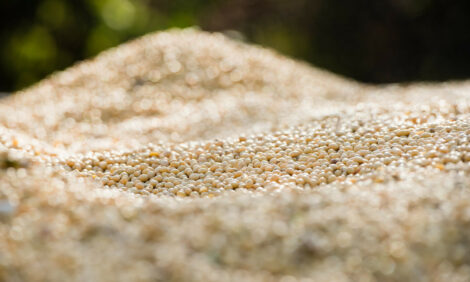



Feed Intake and the Sow
CANADA - The sow, as the producing unit of pork production is a very important factor in the pork enterprise. There are many components to the productive sow including reproduction, feed intake, maternal ability and longevity. All of these components are interrelated, writes Bob Kemp, PhD PAg VP Genetic Programs and R&D Genesus Inc. Lactation is an extremely taxing time for the productive sow. Many sows support lactation through mobilization of body reserves in an effort to reduce the effects on insufficient intake during lactation. However this can have a lasting effect on the lifetime productivity of that sow. Hermesch and Jones (2007) reported that 20 per cent of first and 30 per cent of second parity sows with low lactation feed intake had reduced lifetime performance. Demands for faster growing and heavier slaughter pigs continue to place an increased demand on the sow for increased milk production and subsequent increased litter weight at weaning. Bergsma (2011) in discussing increased energy and protein demands from increased milk production and litter weight gain stated that...“At all events, sows need to eat more and be more efficient at the same time to keep up with this increased demand“.
Grow-finish feed efficiency has always been an important component of production costs and has received increased emphasis as feed costs have increased. However genetic control of grow-finish feed efficiency is to a large extent different from genetic control of lactation feed intake (Bergsma 2011). In fact selection for improved grow-finish feed efficiency may have detrimental effects on sow productivity. Bunter (2010) in a report on genetic associations between voluntary feed intake of females, finisher performance, and sow longevity stated that “Selection for finisher traits to improve production has consequences for the ongoing body development of sows, their longevity, and the pre-natal development and pre-weaning performance of their progeny. There are some strong antagonistic genetic correlations to contend with across this trait complex“. Additionally Young et al. (2010) concluded that sows from a line selected for improved residual feed intake during grow-finish had positive effects on piglet numbers and pre-weaning growth but resulted in more sow body condition loss during lactation.
Clearly there is much to learn regarding selection for sow efficiency. The complex nature of this trait requires thorough evaluation of as many of the contributing factors as possible. To this end Genesus has committed to the development of more selection criteria for sow efficiency. In addition to ongoing collection of data on productivity, reproduction and longevity traits Genesus invested in a sow lactation feed intake study in 2011. This study focuses on intake during lactation and its’ relationship with sow body weight and body condition changes, litter size, litter weight gain and subsequent reproduction. In addition to the development of EBVs for sow efficiency Genesus has invested in a genomic component of this study that will associate genetic markers with the traits of interest. Our partners in this aspect of the study are the University of Alberta, Iowa State University and Genome Alberta. The main outcome from this study is an improved selection program for sow efficiency. Genesus is committed to the investment in research and development to enhance long term genetic improvement of both our maternal and terminal lines. Genesus genetic improvement is dedicated to increasing the competitiveness of our customers. This study is one example of that commitment.








